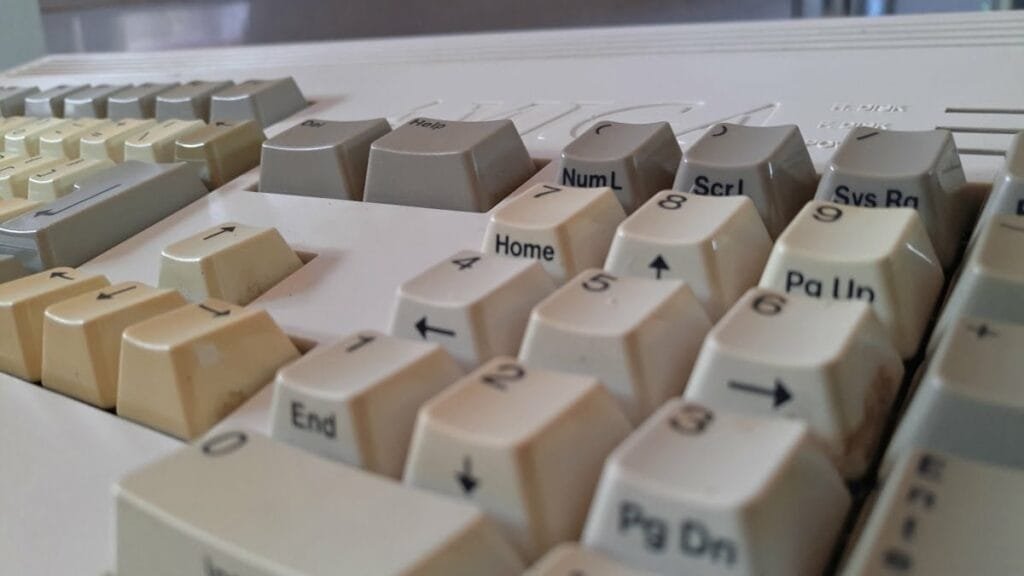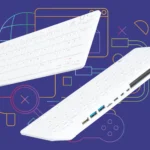Looking back at the launch of the Commodore Amiga and its groundbreaking significance, on its 40th anniversary.
On July 23rd, 1985, at a black tie event in the Vivian Beaumont Theater at Lincoln Center in New York City, computing changed forever.
That sounds pretentiously portentous now, but the step up from 8-bit to 16-bit was a comparative quantum leap when placed alongside the slight improvements in graphics between console generations in the 2010s. The only thing that really comes close in terms of impact is the arrival of the web, or generative AI.
We don’t want to talk about that, though.
I first saw an Amiga in early editions of Commodore User. Naturally, I was instantly grabbed by its astonishing graphics and how the games looked like the ones we played “down the front” (local parlance for the amusement arcades on the sea front), but I never thought I’d ever have my own Amiga.
That changed, but not for another few years. And because I was 9 and 1/2, I had no idea that the computer launched in such a way, or was graced by a demonstration by (among many others) Andy Warhol and Deborah Harry.
No, really!
(I mean, can you even imagine two such influential artists arriving at the launch of a computer in 2025? Of course not — the world has stopped valuing real creativity.)
It wasn’t until years later that I learned this, yet I wasn’t totally surprised. They were using a barely-ready Amiga 1000. But the Amiga unlocked creativity in anyone who used it, whatever the model (although the more you paid, the more you got from it). Whether with word processors, or Deluxe Paint, music programs like ProTracker, the Video Toaster video editor device and software… Look, the list is endless.
Multimedia before it was a thing
Basically, the Amiga brought multimedia to the masses before we even knew what that meant. Hardware-wise, it was light years ahead of anything else, with only the Atari ST coming close. The Acorn Archimedes and the IBM compatibles tried to catch up, and perhaps they did eventually, but the Amiga had something they did not:
A home version for teenagers to play games on.
Creativity at your fingertips
In 1991, I think, my mum and dad bought an Amiga 500. A few years later, I upgraded (?) this to an Amiga 600, before finally swapping that for an Amiga 1200. I still own that machine, and used it throughout the 1990s. It was used for gaming, I did college work on it, made art, probably some music, too, although I wouldn’t have kept it. I also worked on some basic 3D stuff, too, in 3D Construction Kit, and animation in Disney Animation Studio.

The Amiga did stuff that an IBM PC could only do with a ton of additional hardware. It had a mouse driven GUI, like Windows, but years before Microsoft managed it. It was in many ways the antithesis of the drab PC, a fun, exciting computing experience full of possibilities. Furthermore, it didn’t rely on access to the World Wide Web to be fun — it was exactly that by design.
When Jay Miner, RJ Mical, and Dale Luck designed the Amiga (known as “Lorraine,” which informed its eventual name, the Spanish for a female friend) they clearly knew it would be amazing; they put a lot of work into it. Most importantly, Commodore saw that the Amiga would support its move into next generation computing. It is a move of surprising clarity from a company that was already showing signs of corporate inertia.
My Amiga
When I switched to a PC in 1999, I already missed my Amiga, but I knew that without spending hundreds more, I was never going to get the same level of performance. Accelerator cards were expensive, and spare parts were rare. My first computer repair job was done on the Amiga, replacing the floppy drive. This eventually lead to exploration into PC building, and work in IT support.
50% of my GCSE art exam work was done on an Acorn Archimedes (using the ProArtisan software), something I would never have considered if I hadn’t already become familiar with the Deluxe Paint series on the Amiga.

And, I have to confess, there was piracy. Friends at school would swap disks of utilities and games alike; it was wrong, of course, but wow, did it unlock that computer.
We all tread a different path through life, and are influenced by a great number of things. For me, the Amiga has been with me for the best part of that 40 years, and while it might not be suitable as a daily computing platform (I continue to hope that might change), it deserves every accolade that comes its way.
The Amiga won
Revival tributes like the A500 Mini and A600GS keep the 40 candles burning, and maybe one day the Amiga will be back again, powering CGI like it did on Babylon 5, making music videos like it did for “Weird Al” Yankovic, and creating art from beauty like it did for Andy Warhol.
But even if it doesn’t, it already won. Everything we do with our phones, our tablets, our PCs… internet aside, it all happened first on the Amiga.
Affiliate Disclosure: Some of the links in this post may be affiliate links, which means I may earn a small commission if you make a purchase through those links. This comes at no extra cost to you. Thank you for your support!
Christian Cawley is a writer and editor who covers consumer electronics, IT, and entertainment media. He has written for publications such as Computer Weekly, Linux Format, MakeUseOf.com, and Tech Radar.
He also produces podcasts, has a cigar box guitar, and of course, loves retro gaming.








